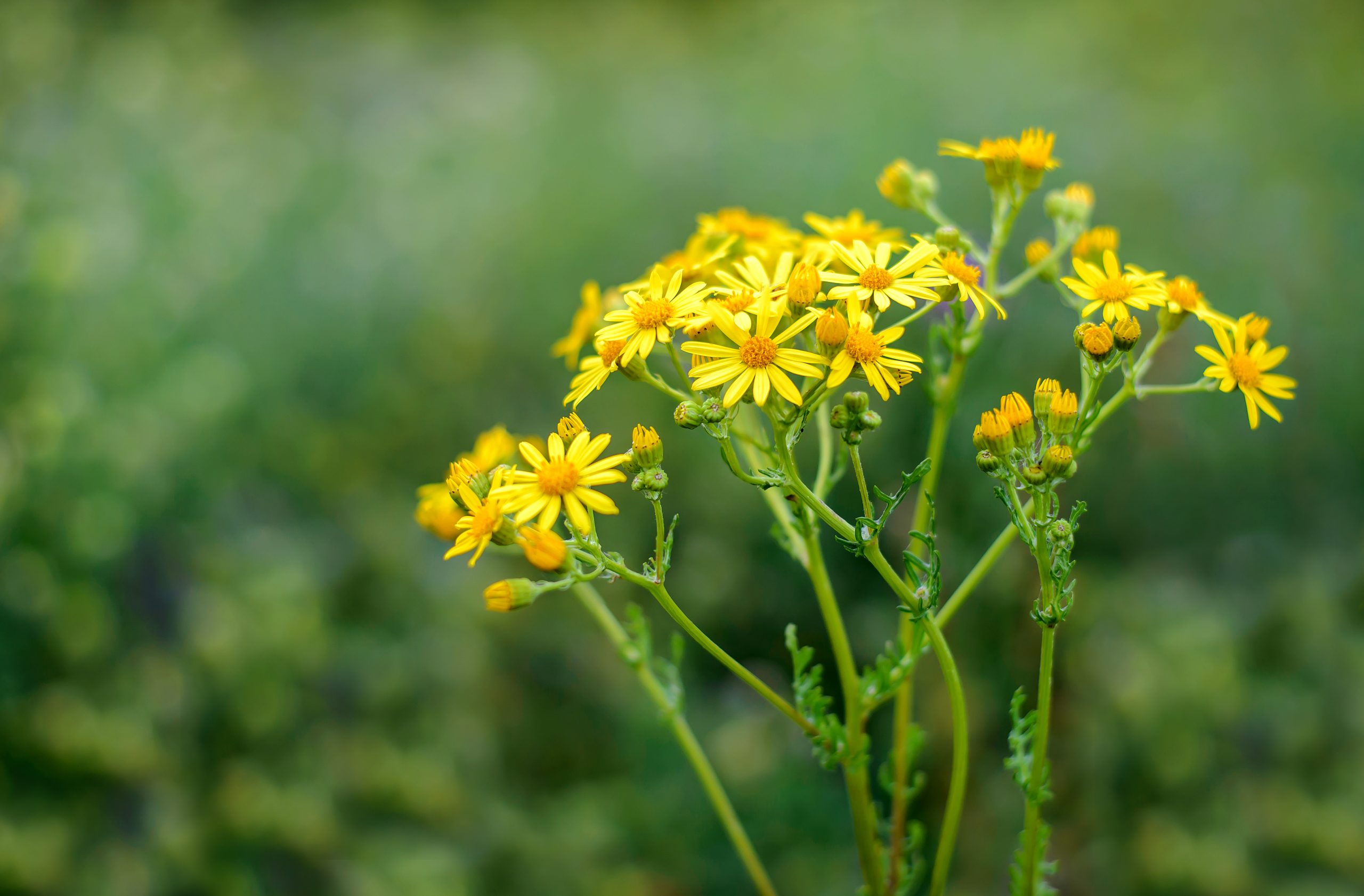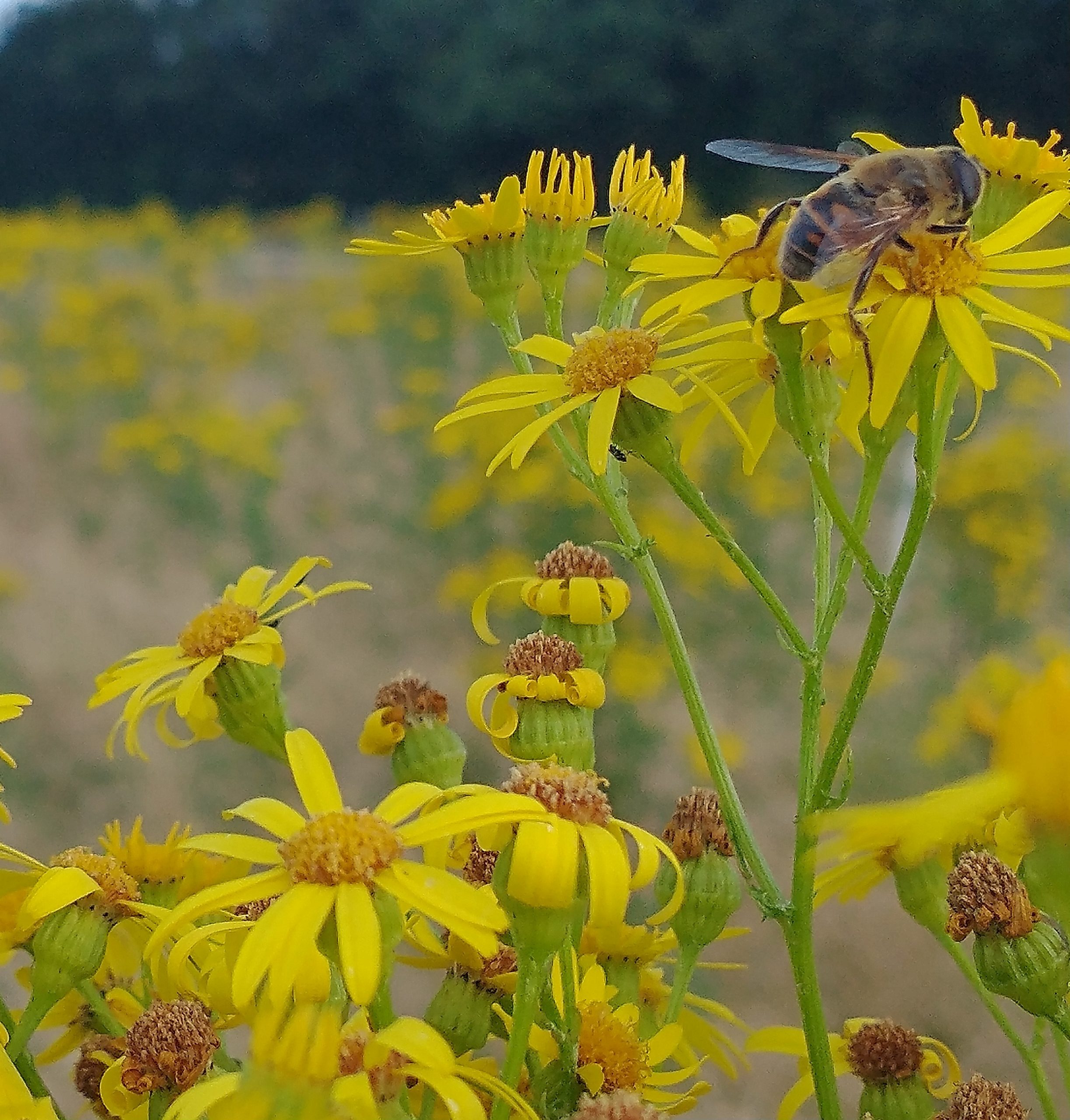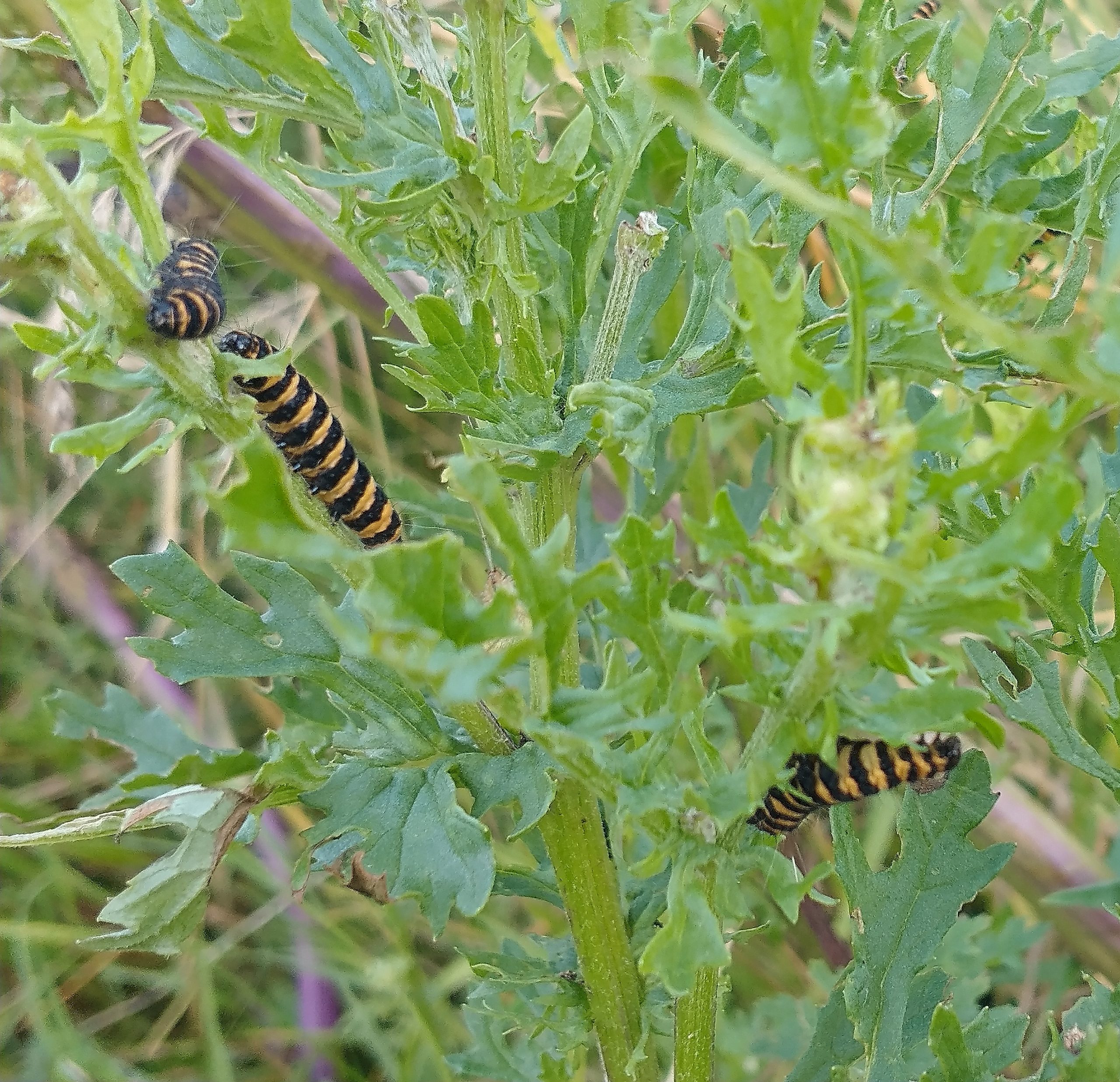
To pull or not to pull, that is the question?




It’s been a bumper year. Drought last year and on off rain this, and our fields, one in particular shines with golden hues. Insects buzz, the red and the black Cinnabar moth thrives but this beautiful native golden daisy is vilified.
Common Ragwort.
It appears that hatred of this plant stems from the post war drive to increase agricultural production. Ragwort, is invasive in agricultural crops and as I know its hard work to pull out of the ground. As a result it was put on a list of 5 ‘weeds’ in 1959 under The Weeds Act which labelled it ‘injurious’. Most people think it is on the list because its toxic to livestock, but it is no more toxic than other plants like the foxglove. Horses, who are most suspectable to it have to eat 5-25 times their body weight before it is fatal. When it’s growing, they know what’s good for them and don’t eat it. Hence, a pasture of cropped grass with spikes of yellow. When it’s dried and chopped into hay or silage its more problematic as horses can’t smell it so are more likely to eat it. Still, that’s a hell of a lot to eat in a short space of time.
So here is my dilemma:
Nature conservation, our insects are really in crisis. If you listen to ‘the science’, and if we don’t stop destroying habitat for and poising our insects soon our ability to feed ourselves will be in doubt.
Versus.
Government Land Management guidelines of 2014. “It is not an offence to have these weeds growing on your land…. But you must prevent harmful weeds from spreading to a neighbour’s property.” 60% of Ragwort seeds fall at the base of the plant and as the seeds get lighter and are carried by the wind they are also less fertile. They don’t spread that far in other words, but they do remain in the soil for years until the germination conditions are right.
Grazing for horses and haymaking. The largest crop of Ragwort is predictably enough in the field which we have let for horse grazing…. The horses are munching around the yellow bloom of course, but there is a hell of a lot of it this year. If the weather holds long enough for haymaking, I don’t want it to be full of the dried plant.

So, a compromise. In this field at least we are pulling. It’s taking time but its by far the best way. At least there are no chemicals being used and as it flowers it is providing a nectar source. Given the amount I doubt I will get to it all before it seeds, but we keep going with the dog ferreting around us and emerging covered in burrs.
In the Outback however they are allowed to be. Part of the ecosystem of this country. The Cinnabar moth whose yellow and black caterpillar naturally helps control the plant is allowed to live out its life cycle.
If you have this plant please make an informed decision about whether to keep, control or totally remove. While they are flowering enjoy them, they do look stunning with that other ‘tyrant’ the thistle